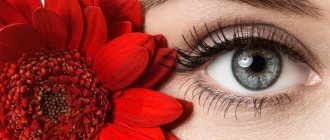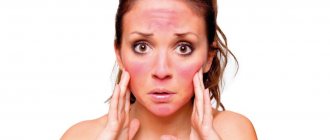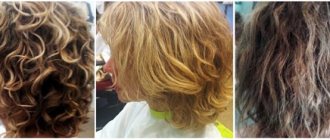Tanning in a horizontal solarium
A good solarium is one that allows you to tan comfortably during the procedure, and ultimately get a perfect tan.
A beautiful, uniform tan of the entire body is guaranteed by specialized tanning studios, as well as premium beauty salons - they, as a rule, work with professional solariums that provide the desired skin tone in a short time, while the negative effects of ultraviolet radiation on the human body are minimized.
There are professional solariums: vertical, horizontal, turbo solariums and solarium chairs.
Features of tanning in a horizontal solarium
Among fans of tanned skin, the horizontal solarium is very popular. Their main advantage is that the session is carried out in a lying position. This allows you to relax tense muscles and enjoy extra rest while warm UV rays glide over your skin, covering it in a seductive tint.
Another advantage of such a solarium is that it allows you to tan completely, including your feet, which tan worse in a vertical solarium.
Tanning in a vertical solarium has the following nuances:
- During the session you need to lie down correctly. The arms should be lowered along the body, but under no circumstances should they touch it. When sunbathing on your stomach, your hands should be turned with the inside towards the lamps. The legs should be located at a short distance from each other. The head should be kept on its side and turned left and right from time to time.
- When lying in one position, white spots may remain on areas of the skin where the body was tightly adjacent to the panel. To prevent this from happening, you must turn over periodically during the procedure.
- If your facial skin tone is darker than the covered areas of your body, your facial tan may end up being too dark. In this case, you can use a solarium with a function to turn off tanning in the face area.
Rules of conduct in the solarium:
- Before the procedure, clean your face of decorative cosmetics;
- Before entering the booth, remove your jewelry;
- cover the piercing with special stickers;
- cover tattoos and large moles with stickers;
- Apply a thin layer of a protective agent (cream, lotion) to the body;
- put a hat/scarf on your head;
- Cover your breasts with protective caps (nipples with stickers);
- Wear special glasses for tanning in a solarium;
- periodically change your position, lying on your back, stomach, sideways;
- do not exceed the permissible time spent in the solarium;
- After tanning, apply cosmetic oil to your skin.
Parameters to pay attention to
Regardless of what type of solarium you prefer, there are a number of parameters on which the quality and safety of the device depends.
- the number of lamps can vary from 4 in household installations to 80 in professional devices. To tan your entire body, the optimal amount is considered to be from 30 to 45 lamps. Experts point out that often powerful solariums with a large number of lamps give worse results, since they are designed to operate from 400 volts, while in Russia the network most often produces 340-360. The lamps do not work at full capacity and wear out quickly.
- pressure level can be high or low. High-pressure lamps are very powerful (from 250 W), they allow you to get a tan quickly, but they are not safe; they require a special filter to work. Low pressure devices operate in a gentle mode (from 80 to 250 W), the risk of getting burned is minimal.
- power – varies from 30 to 600 W. For horizontal solariums, the optimal level is 100-120 W, for vertical solariums 180-230 W.

- type of radiation - ultraviolet is divided into three spectra: A, B, C. The first spectrum is responsible for the production of melanin in the skin, the second promotes the formation of vitamin D, the third has an antibacterial effect, and can also provoke the formation of cancer cells. High-pressure lamps produce all three spectra, so they should be used only in combination with protective screens that cut off C-group rays. Low pressure lamps combine only the first two spectra. It is important to consider their ratio here. On sale you can find lamps with UVB from 0.1 to 3.6%. According to dermatologists, the optimal figure is 2.4-2.6%. A level above 2.8% causes a slight photoburn and the skin turns red; excessive use of such tanning will lead to early aging.
- service life - depending on the manufacturer, can be from 500 to 1000 hours; exact data must be indicated in the accompanying documents. Some professional models are equipped with working hours counters. In the first 50 hours of operation, the lamps operate with greater power, so the treatment time must be reduced. Towards the end of the working period, productivity drops, the quality of the tan deteriorates, but harmful effects appear much more often. Additional factors may influence the service life: mains voltage drops, operating mode. For monitoring, good tanning salons have a special device for assessing the degree of UV radiation production (UV photometer).
Comparison of vertical and horizontal solariums
Fans of tanning in solariums vied with each other in praising both vertical and horizontal solariums. However, there are many who claim that artificial tanning in a horizontal solarium is much better than a vertical one and vice versa.
Advantages and disadvantages
So, let's figure out how a vertical solarium differs from a horizontal one, what is their fundamental difference and which solarium is better.
The main difference between solariums is their configuration. Actually, the names speak for themselves: in a horizontal solarium, the lamps are located in a horizontal position, respectively, the tanning procedure is carried out in a lying position. In a vertical solarium, the booth and lamps are located vertically, and tanning is done in a standing position.
Advantages of a vertical solarium
- quick tanning;
- spacious cabin;
- lack of contact with solarium panels (glass, walls);
- the ability to move around your own axis, to dance.
Flaws
- the level of comfort is lower than that of a horizontal solarium;
- the skin on the legs tans less intensely than on the upper body.
Advantages of a horizontal solarium
- comfort during the procedure;
- the opportunity to relax and unwind;
- minimal risk of burns;
- the cost of one procedure is less compared to a vertical solarium.
Flaws
- tan with the effect of “white” spots (in areas where the body is in close contact with the surface of the camera, the skin will receive a lighter shade);
- limited capsule length;
- closed space;
- duration of the procedure (radiation in horizontal solariums is less intense compared to vertical, which is why the session lasts twice as long);
- hygiene conditions.
What effect does collarium bring?
A beautiful tan can also be achieved in a solarium in a shorter period of time, so women ask their cosmetologist which is better: a solarium or a colarium. A competent specialist will explain that along with a beautiful and even tan in a collarium, a woman gets the following effect:
- Rejuvenating. Thanks to the activation of cellular nutrition, skin tone increases. Cleansing of toxins and toxic substances has a therapeutic effect in the fight against cellulite at an early stage.
- Regenerating. The procedure is used to eliminate wrinkles and smooth the skin. With a long course, you can achieve the elimination of skin pigmentation and freckles.
- Smoothing. As a result of activation of collagen production, the skin is tightened, wrinkles are smoothed out, and even spider veins and rosacea are eliminated.
History of appearance
The effect of this type of radiation was discovered accidentally during the research of the German scientist Friedrich Wolf. Thanks to the results of the experiment, his brother was able to use the knowledge gained in his new business providing services for obtaining a beautiful healthy tan. Since then, solarium began to gain popularity among people all over the world, although initially this procedure was available and needed by athletes to maintain a tan while participating in competitions.
By the beginning of the eighties, solariums began to be produced en masse, especially in a country like the USA. Services for acquiring beautiful skin color were able to win the attention of millions of people and this, of course, was reflected in the future. Therefore, nowadays almost every beauty salon has a solarium.
By visiting a solarium, you can get not only a wonderful tan, but also the pleasure of the warmth of UV rays, which is completely indistinguishable in sensation from the heat received by the sun. The main thing is that this pleasure does not become painful, because with the popularity of solariums, the popularity of such a disease as tanorexia has grown - an urgent need for a person to obtain an artificial tan, a type of psychological dependence.
Safety regulations
To sunbathe without harm to the body, you must follow a number of simple rules.
- Eye protection is required.
Among the regulars of the solarium, there are those who do not take this recommendation seriously. But in vain.
Recent studies conducted by European doctors have established a relationship between the amount of time a person spends in a solarium and the risk of developing a number of diseases leading to blindness. Among these diseases are cataracts (clouding of the lens), damage to the retina.
To maintain eye health, it is not necessary to refuse to visit the solarium. But one should take into account the fact that the skin of the eyelids is thin and cannot provide sufficient protection of the eyes from ultraviolet radiation. Therefore, the use of glasses to protect the eyes during the procedure is mandatory.
You can use the glasses that tanning salons provide to their clients. Or you can buy your own glasses if you plan to visit the solarium for a long time and regularly.
- Chest protection is also necessary.
If you don’t want to sunbathe in a swimsuit, you can use special stickers for the areolas. If the tanning studio does not have such stickers, then you can use ordinary cotton pads.
- We take contraindications into account.
A visit to the solarium is exactly the same physiotherapeutic procedure as many others. Ultraviolet radiation, just like other types of exposure, leads to the development of changes in the functioning of organs and systems of the body.
For a healthy body, such exposure will be beneficial and will lead to increased resistance to various pathogenic environmental factors. In cases where the body is weakened by an acute or chronic illness, a session in a solarium can lead to a deterioration in condition and well-being.
Who should not sunbathe in a solarium:
- pregnant women;
- minors;
- people with the first skin type;
- people with acute or exacerbation of chronic diseases of internal organs;
- those who have a tendency to bleed;
- women during menstruation;
- people with moles, when these moles are numerous or large in size;
- clients with skin diseases;
- anyone who takes medications that increase skin sensitivity to ultraviolet radiation (these are not only retinoids, these can also include some antibiotics, hormonal drugs and other medications).
Separately, it is worth discussing such a point as visiting a solarium for psoriasis. In principle, you can sunbathe with psoriasis, but a number of points should be taken into account.
The first point is the likelihood of an aggravation of the process. The risk is small. According to statistics, only about 5% of patients receive it. Moreover, more than half note improvement in the course of the disease or complete disappearance of plaques. And approximately 30% of clients do not notice any changes.
The second point is the need for additional skin hydration. Ultraviolet rays dry out the skin. Therefore, plaques can crack and bleed.
- We carry out the required stages of preparation for the procedure.
You should take a shower approximately an hour and a half before your visit. If this is not possible, then you can rinse in the shower immediately before the procedure. In any case, you should not use soap. It is better to replace it with a light shower gel so as not to dry out the skin and completely wash off the protective hydrolipidic mantle from it. Dry, completely degreased skin is a risk of getting burned.
A day or two before visiting the solarium, it is not recommended to perform peelings, skin scrubbing, or traumatic procedures such as depilation, as all this can lead to burns or uneven tanning on the skin. In the case of peelings, you can get pigmentation, which will be quite difficult to remove.
Before the procedure, you should remove all decorative cosmetics from your face. For lips, you must use hygienic lipstick with ultraviolet protection. You should also not apply aromatic oils, eau de toilette and other cosmetics to your skin after a shower, except those specifically intended for solariums.
Hair must be hidden under a thick cap or scarf. This preparation will allow you to avoid surprises such as patchy tan and bleached hair.











